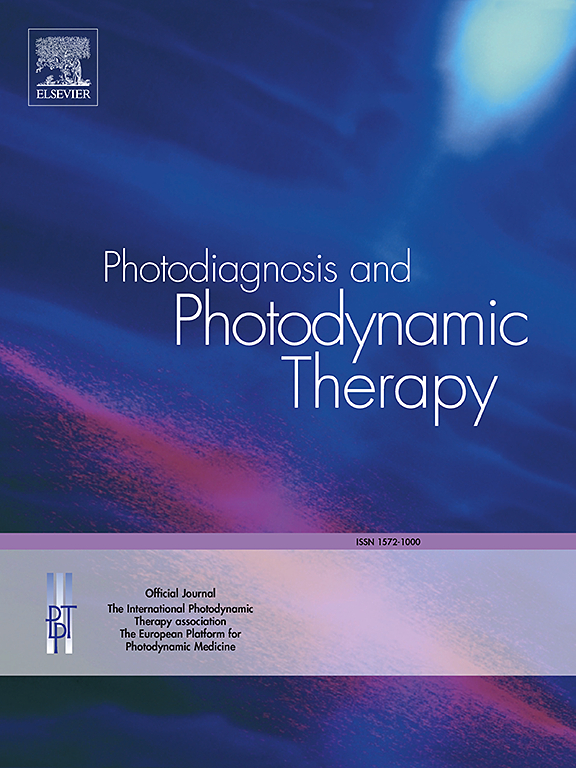Evaluating choroidal vascular changes in young adults with high myopia utilizing swept source optical coherence tomography angiography
IF 3.1
3区 医学
Q2 ONCOLOGY
引用次数: 0
Abstract
Purpose
Utilizing Swept source optical coherence tomography angiography (SS-OCTA) investigates the changes in the vascular characteristics of the choriocapillaris and larger vascular layers, including Sattler's and Haller's layers, in the macular region of young myopia patients, in order to Enhance our comprehension of the underlying mechanisms of the pathogenesis of myopia.
Methods
A retrospective analysis was performed on 103 young adults (154 eyes) that underwent SS-OCTA. Axial lengths (AL) were measured, 64 eyes with AL < 26.5 mm as non-high myopia (NHM) and 90 eyes with AL ≥ 26.5 mm as high myopia (HM). Macular superficial capillary plexuses (SCP), deep capillary plexuses (DCP), choriocapillaris (CC) density, choroidal Sattler's and Haller's layers (CSHL) density, foveal avascular zone area (FAZ area), and subfoveal choroidal thickness (SFCT) were assessed. Multivariate regression analysis was employed to assess the effect of age,spherical equivalent(SE), axial length(AL),and SFCT on OCTA parameters.
Results
SCP and DCP densities in the foveal retina of NHM group were significantly lower than those in HM group(SCP 20.09 ± 4.30 vs. 21.54 ± 4.52, p = 0.043;DCP14.73 ± 3.93 vs. 16.21 ± 4.07, p = 0.024). Also, CC density subfoveal was significantly lower in NHM group compared to HM group(55.02 ± 2.39 vs. 56.37 ± 2.76, p = 0.0001); CSHL density subfoveal and parafoveal temporal were also significantly lower in NHM than HM(subfoveal 55.78 ± 4.67 vs. 58.17 ± 4.41, p = 0.002;parafoveal temporal 52.10 ± 3.48 vs. 54.06 ± 4.12, p = 0.002). In the multiple linear regression analysis, density of SCP in the foveal retina was increased with higher myopia(sβ=0.226, p = 0.047)and decreased with aging(sβ=-0.304, p = 0.001). Moreover, gradual decrease of the DCP was observed with aging(sβ=-0.227, p = 0.004). CSHL density subfoveal increased with the increase in AL(sβ=0.318, p = 0.007).
Conclusion
Age primarily influenced retinal vessel density, whereas axial length significantly affected Sattler's and Haller's layers. This also indicates that the subfoveal and parafoveal temporal CSHL densities are crucial for monitoring changes during myopia progression. Additionally, there appears to be a compensatory mechanism for high myopia to sustain visual function.
利用扫描源光学相干断层扫描血管造影评价青年高度近视患者脉络膜血管的变化。
目的:利用扫源光学相干断层血管造影(SS-OCTA)研究青少年近视患者黄斑区毛膜毛细血管及大血管层(包括Sattler层和Haller层)血管特征的变化,以加深对近视发病机制的认识。方法:对103例青年人(154眼)行SS-OCTA手术进行回顾性分析。测量眼轴长度(AL), AL < 26.5mm为非高度近视(NHM) 64眼,AL≥26.5mm为高度近视(HM) 90眼。评估黄斑浅毛细血管丛(SCP)、深毛细血管丛(DCP)、绒毛膜毛细血管丛(CC)密度、脉络膜Sattler’s和Haller’s层(CSHL)密度、中央凹无血管区面积(FAZ)和中央凹下脉络膜厚度(SFCT)。采用多元回归分析评估年龄、球等效(SE)、轴向长度(AL)和SFCT对OCTA参数的影响。结果:NHM组中央窝视网膜SCP、DCP密度显著低于HM组(SCP 20.09±4.30 vs. 21.54±4.52,p =0.043;DCP14.73±3.93 vs. 16.21±4.07,p =0.024)。NHM组中央凹下CC密度显著低于HM组(55.02±2.39 vs. 56.37±2.76,p =0.0001);NHM组的CSHL密度也明显低于HM组(中央凹下55.78±4.67∶58.17±4.41,p =0.002;颞中央凹旁52.10±3.48∶54.06±4.12,p =0.002)。多元线性回归分析结果显示,近视程度越高,中央凹视网膜内SCP密度越高(sβ=0.226, p=0.047),年龄越大,SCP密度越低(sβ=-0.304, p=0.001)。随着年龄的增长,DCP逐渐降低(sβ=-0.227, p=0.004)。CSHL密度随AL的增加而增加(sβ=0.318, p=0.007)。结论:年龄主要影响视网膜血管密度,而轴向长度显著影响Sattler和Haller层。这也表明,中央凹下和中央凹旁颞部CSHL密度对于监测近视进展过程中的变化至关重要。此外,高度近视似乎有一种代偿机制来维持视觉功能。
本文章由计算机程序翻译,如有差异,请以英文原文为准。
求助全文
约1分钟内获得全文
求助全文
来源期刊

Photodiagnosis and Photodynamic Therapy
ONCOLOGY-
CiteScore
5.80
自引率
24.20%
发文量
509
审稿时长
50 days
期刊介绍:
Photodiagnosis and Photodynamic Therapy is an international journal for the dissemination of scientific knowledge and clinical developments of Photodiagnosis and Photodynamic Therapy in all medical specialties. The journal publishes original articles, review articles, case presentations, "how-to-do-it" articles, Letters to the Editor, short communications and relevant images with short descriptions. All submitted material is subject to a strict peer-review process.
 求助内容:
求助内容: 应助结果提醒方式:
应助结果提醒方式:


